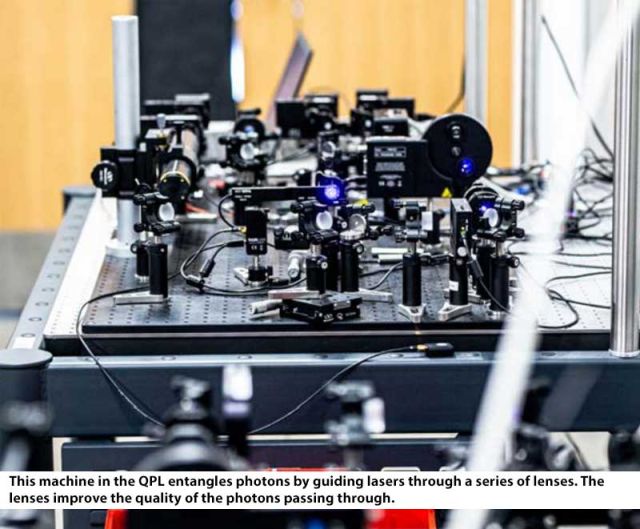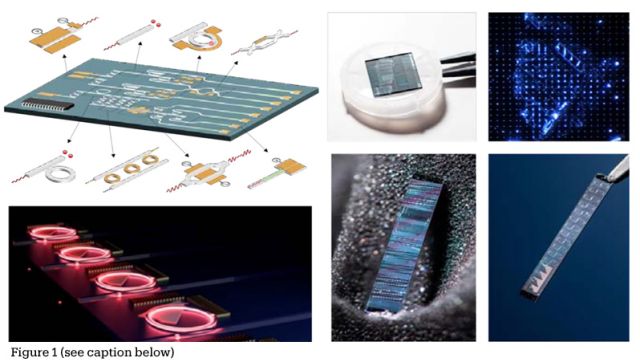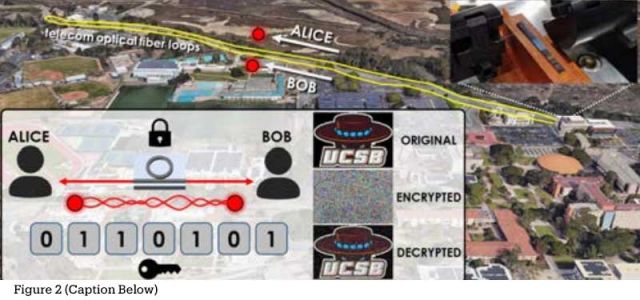
ECE Research Initiative
Galan Moody and Group | "The Quantum Photonics Lab @ UCSB"
From The ECE Current 2023-24 Newsletter
Over nearly a century ago, quantum mechanics changed how we view the world around us. Since then, many transformative technologies have relied on quantum phenomena, from the transistor that powers all our electronics and the laser that drives global connectivity to atomic clocks that enable precision timekeeping and GPS synchronization. We are now experiencing another quantum revolution in which new technologies leverage entanglement between quantum objects—what Einstein called “spooky action at a distance.” Recent demonstrations of so-called Quantum 2.0 technologies include small-scale quantum computers, quantum communications links, and quantum-enhanced sensors. Yet, many open challenges remain: How far can we push the performance of quantum bits (qubits)—the fundamental building block of all Quantum 2.0 systems? How do we go from a few qubits to thousands or millions of entangled qubits needed for quantum computing? And how can we leverage quantum mechanics to sense the world around us in ways that aren’t possible with classical devices?
In the Quantum Photonics Lab (QPL), we address many of these open challenges by developing integrated photonic technologies—the optical analog of microelectronics. We use the photon as our building block—quantum information can be encoded, processed, stored, and transmitted using different properties of light itself, such as its polarization or frequency. Photons are ideal carriers of quantum information: they interact weakly with their environment enabling room temperature devices; they carry information at the speed of light; and we can leverage existing integrated photonic and telecommunications fiber optic infrastructure.

Integrated Photonics Technologies (Fig. 1)
Our group designs, fabricates, and tests a variety of integrated photonic technologies, some of which are shown in Figure 1. Our group has pushed the frontiers of quantum light generation: by replacing silicon, the conventional material for integrated photonics, with the highly nonlinear AlGaAs material, our team demonstrated a nearly 1,000-fold improvement in the brightness of entangled photon sources. These can be combined with up to thousands of optical components onto a single semiconductor chip, such as quantum light sources, modulators, filters, and detectors, to manipulate and detect entanglement across many photonic qubits. Their functionality can be augmented through the heterogeneous integration of other materials that the QPL specialized in. For example, by integrating defect-based quantum emitters engineered in 2D materials with silicon nitride photonic resonators, we demonstrated ultra-efficient, room temperature, on-chip single-photon sources in a CMOS-compatible photonic platform.
Caption for Figure 1 – QPL develops integrated photonic technologies for quantum information science and related applications. We specialize in III-V materials, such as AlGaAs and InGaP, as well as engineering 2D materials for quantum light generation.

Integrated Photonic Entangled-pair Sources (Fig. 2)
Figure 2 illustrates one immediate application of integrated photonic entangled-pair sources: Quantum Key Distribution (QKD). By sending entangled photons generated from AlGaAs resonators in our lab in Henley Hall along a campus fiber-optic optic loop to two receivers (Alice and Bob), we can generate a digital key used for encrypted communications, where the security is guaranteed by the laws of quantum mechanics.
Caption for Figure 2 – entanglement-based quantum communications using telecom-wavelength optical fibers installed on UCSB’s campus to create a quantum-secured key for encrypted communications
In the QPL, we enjoy the challenges of combining many different material systems with integrated photonics, leveraging each of the materials’ advantages. Our research is highly interdisciplinary, and our team comprises undergraduate and graduate students from electrical engineering, materials science, physics, and other fields, which makes for a collaborative and creative research environment. We also value connecting with our community, and in collaboration with UCSB’s CSEP, we have developed and contributed to many outreach activities, student mentorship and professional development, and new courses enabling hands-on training with quantum hardware.
For more information about QPL group members, their research, and our outreach and education activities visit: